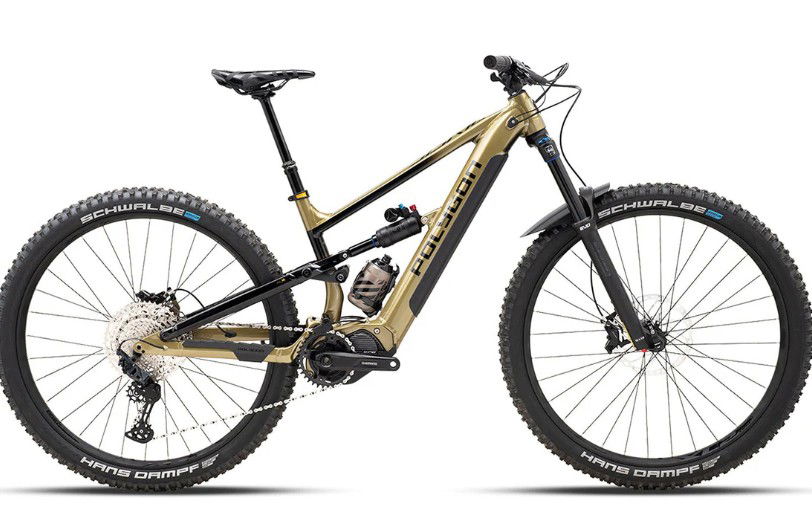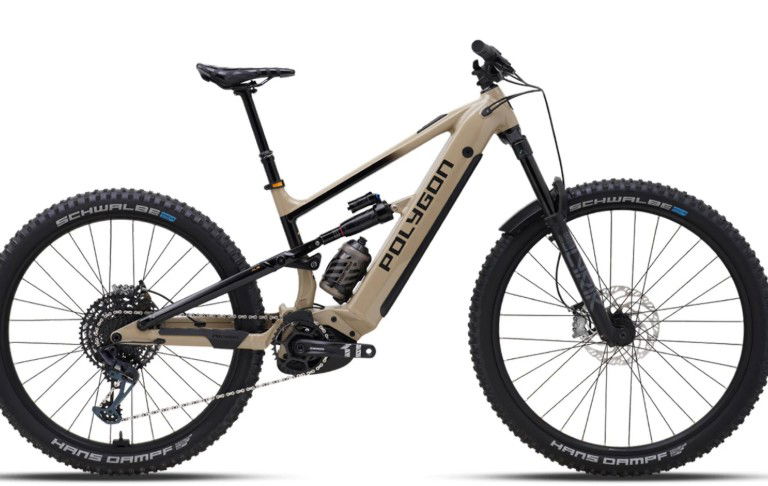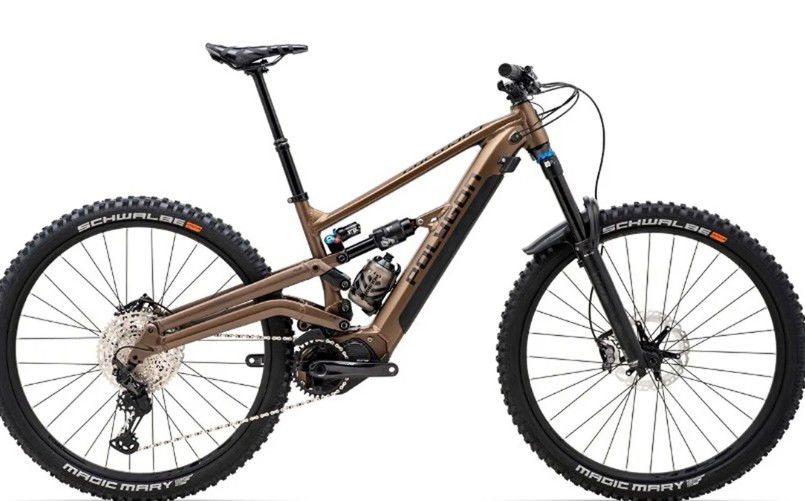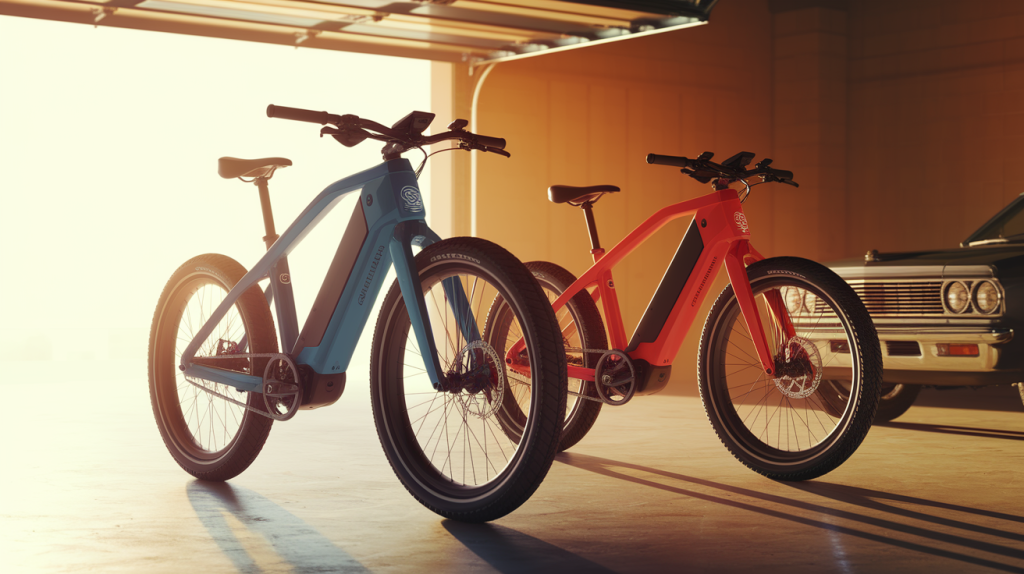Successfully replacing a car with an eBike requires thoughtful consideration of infrastructure and route planning. Unlike driving, where the shortest route is typically preferred, eBike commuting often benefits from choosing routes with dedicated bike lanes, lower traffic volumes, or smoother pavement conditions. Modern mapping applications now offer bicycle-specific navigation, highlighting bike-friendly routes and even indicating elevation changes to help riders avoid unnecessarily steep climbs.
Route Planning Priorities:
- Safety: Prioritize protected bike lanes and low-traffic streets
- Efficiency: Balance directness with elevation changes
- Surface quality: Avoid roads with poor maintenance
- Amenities: Consider access to charging points and secure parking
Charging infrastructure becomes relevant for longer trips beyond the bike’s single-charge range. Many workplaces now offer charging facilities, and public charging stations are increasingly available in urban areas. Planning around these resources extends the practical range of your eBike substantially. Similarly, identifying secure parking locations along regular routes provides peace of mind when making stops for errands or meetings.
Weather considerations play a more significant role for eBike commuters than for drivers. While modern eBikes can handle most conditions, having alternative routes for extreme weather—perhaps with more tree cover for hot days or better-maintained roads for wet conditions—enhances the year-round viability of eBike transportation.
Carrying Solutions for Different Needs
The ability to carry everything from groceries to children determines how completely an eBike can replace car functions. Different carrying needs require specific solutions. For daily commuting with a laptop and personal items, pannier bags mounted on rear racks offer weather protection and convenient removal upon arrival. Front baskets or handlebar bags provide easy access to essentials while riding.
Cargo Solutions by Use Case: •
- Daily Commuting: Panniers, handlebar bags, small backpacks
- Grocery Shopping: Rear baskets, cargo trailers, frame bags
- Child Transport: Dedicated child seats, trail-a-bikes, cargo bikes
- Bulky Items: Folding trailers with 40kg+ capacity
Grocery shopping trips benefit from larger capacity options like rear basket systems capable of holding multiple bags. For bulkier items, cargo trailers offer substantial capacity—some models can carry up to 45kg and fold for storage when not in use. Family transportation requires special consideration, with child seats for younger passengers and trail-a-bike attachments for older children who can contribute to pedaling but aren’t ready for independent riding in traffic.
Some riders maintain a modular approach, using different carrying configurations based on daily needs. Quick-release mounting systems allow for rapid conversion between commuter, shopping, and family transportation setups, maximizing the eBike’s versatility as a car replacement.
Managing Longer Trips and Special Cases
While eBikes excel at replacing cars for daily transportation needs, longer trips and special cases require additional strategies. For distances beyond comfortable single-charge range, multimodal transportation offers effective solutions. Many public transit systems now accommodate eBikes, allowing riders to combine cycling with bus or train travel for longer journeys. Ride-sharing services provide backup for unexpected situations like sudden weather changes or mechanical issues.
3-Tier Approach to Transportation Needs:
- Primary: eBike for daily commuting, local errands (0-20km)
- Secondary: Multimodal combinations for medium distances (20-50km)
- Occasional: Car-sharing or rentals for infrequent long trips
Vacation travel and other occasional long-distance needs don’t necessarily require maintaining a car. Car-sharing services and traditional rentals provide cost-effective solutions for these infrequent requirements. When calculating the financial benefits of eBike transportation, the occasional use of these services still results in significant savings compared to year-round car ownership.
Medical transportation and emergency situations represent important considerations. While ambulances address true emergencies, establishing relationships with local taxi services or keeping ride-sharing apps updated provides peace of mind for urgent but non-emergency situations where cycling isn’t appropriate.
The Financial Case: eBike vs. Car Ownership
Total Cost of Ownership Analysis
A comprehensive analysis of the total cost of ownership strongly favors eBikes over cars for most urban and suburban residents. A quality transportation-ready eBike with necessary accessories typically requires an initial investment of $3,000-$6,000—approximately 15-20% of the cost of an economy car. This initial price advantage becomes even more pronounced when considering ongoing expenses.
5-Year Cost Comparison:
|
Expense Category |
Car Ownership |
eBike Ownership |
|---|---|---|
|
Initial purchase |
$25,000+ |
$3,000-6,000 |
|
Insurance |
$7,500+ |
Optional ($500) |
|
Fuel/Electricity |
$6,000+ |
$250 |
|
Maintenance |
$4,000+ |
$1,250 |
|
Parking |
$2,500+ |
Minimal/Free |
|
Depreciation |
$7,500+ |
$1,500 |
|
TOTAL |
$52,500+ |
$6,500-9,500 |
Annual operating costs for cars include insurance ($1,500+), fuel ($1,200+), maintenance ($800+), parking ($500+), and depreciation ($1,500+), easily exceeding $5,000 per year. In contrast, eBike annual costs typically include maintenance ($250), electricity ($50), and potential accessory replacements ($200), totaling under $500 annually. Even including occasional taxi or car-sharing services for special needs ($500-1,000 annually), eBike transportation costs remain significantly lower.
Over a five-year period, car ownership typically costs $40,000-60,000 including purchase and operation, while eBike ownership totals $8,000-12,000 for the same period. This $30,000+ difference represents substantial potential savings that can be redirected to other financial priorities.
Financing and Incentive Programs
The financial accessibility of eBikes continues to improve through expanded financing options and incentive programs. Many bicycle retailers now offer financing plans similar to those available for automobiles, with monthly payments typically ranging from $100-300—substantially less than car payments. Some employers have established bicycle purchase assistance programs, recognizing the health benefits and reduced parking requirements that result from employee cycling.
Available Financial Incentives: • Government tax credits and rebates ($500-1,000) • Employer commuter benefits programs • Health insurance wellness rewards • Utility company efficiency rebates • Low-interest financing through bike retailers
Government incentives for eBike purchases have expanded significantly, with many regions offering tax credits or direct rebates to encourage adoption. These programs typically provide $500-1,000 toward eBike purchases, effectively reducing the initial cost gap. Utility companies in some areas offer additional rebates, recognizing the grid benefits of shifting transportation from gasoline to more efficient electric options.
Insurance options for eBikes have also evolved, with specialized policies covering theft, damage, and liability at reasonable rates. While not legally required in most areas, these policies provide peace of mind for a fraction of the cost of auto insurance.
Making the Transition: From Car to eBike
Starting Gradually
Most successful transitions from car dependency to eBike transportation follow a gradual approach. Beginning with shorter, simpler trips builds confidence and helps establish new routines. Many commuters start by riding to work once or twice weekly, then increasing## Practical Considerations for Car Replacement
Infrastructure and Route Planning
Successfully replacing a car with an eBike requires thoughtful consideration of infrastructure and route planning. Unlike driving, where the shortest route is typically preferred, eBike commuting often benefits from choosing routes with dedicated bike lanes, lower traffic volumes, or smoother pavement conditions. Modern mapping applications now offer bicycle-specific navigation, highlighting bike-friendly routes and even indicating elevation changes to help riders avoid unnecessarily steep climbs.
Charging infrastructure becomes relevant for longer trips beyond the bike’s single-charge range. Many workplaces now offer charging facilities, and public charging stations are increasingly available in urban areas. Planning around these resources extends the practical range of your eBike substantially. Similarly, identifying secure parking locations along regular routes provides peace of mind when making stops for errands or meetings.
Weather considerations play a more significant role for eBike commuters than for drivers. While modern eBikes can handle most conditions, having alternative routes for extreme weather—perhaps with more tree cover for hot days or better-maintained roads for wet conditions—enhances the year-round viability of eBike transportation.
Carrying Solutions for Different Needs
The ability to carry everything from groceries to children determines how completely an eBike can replace car functions. Different carrying needs require specific solutions. For daily commuting with a laptop and personal items, pannier bags mounted on rear racks offer weather protection and convenient removal upon arrival. Front baskets or handlebar bags provide easy access to essentials while riding.
Grocery shopping trips benefit from larger capacity options like rear basket systems capable of holding multiple bags. For bulkier items, cargo trailers offer substantial capacity—some models can carry up to 45kg and fold for storage when not in use. Family transportation requires special consideration, with child seats for younger passengers and trail-a-bike attachments for older children who can contribute to pedaling but aren’t ready for independent riding in traffic.
Some riders maintain a modular approach, using different carrying configurations based on daily needs. Quick-release mounting systems allow for rapid conversion between commuter, shopping, and family transportation setups# Top eBikes That Can Replace Your Car in 2025
As urban congestion worsens, fuel prices fluctuate, and environmental awareness grows, more people are considering electric bikes as a viable alternative to car ownership. In 2025, eBikes have evolved far beyond simple recreational vehicles into legitimate transportation solutions capable of handling commutes, errands, and even family transportation needs. With advanced battery technology, powerful motors, all-weather capabilities, and practical cargo options, today’s electric bikes can effectively replace cars for many daily tasks while offering significant financial and lifestyle benefits.
Why Consider an eBike as a Car Replacement?
Economic Benefits
The financial case for replacing a car with an eBike is compelling and multifaceted. The initial investment for a quality eBike typically ranges from $2,000-$5,000, dramatically less than the $25,000 or more required for even a basic new car. This difference becomes even more significant when considering operating costs. Annual eBike maintenance averages just $200-300, a fraction of the $3,000+ that car owners spend on maintenance, insurance, and fuel combined.
Top 3 Financial Advantages:
- Initial Cost Savings: 80-90% lower purchase price compared to cars
- Minimal Operating Expenses: No fuel costs, insurance, or registration fees
- Reduced Maintenance: Simple systems with fewer replacement parts
Most jurisdictions don’t require eBikes to be registered or insured, eliminating those recurring expenses altogether. Perhaps most appealingly, the cost of “refueling” an electric bike is negligible—recharging an eBike costs approximately $0.10-0.20 per charge, amounting to roughly $50 annually for daily use. This substantial economic advantage allows many eBike commuters to recoup their initial investment within the first year of ownership.
Environmental Impact
Switching from a car to an eBike dramatically reduces your carbon footprint in several ways. Electric bikes produce zero direct emissions during operation, a stark contrast to even the most efficient gasoline vehicles. When considering the entire lifecycle emissions—including battery production and electricity generation—eBikes still produce approximately 97% fewer emissions per kilometer than cars.
The environmental benefits extend beyond emissions alone. eBikes require significantly fewer raw materials to manufacture and consume far less energy throughout their lifespan. The batteries that power modern electric bikes are increasingly recyclable, further reducing their environmental impact. By choosing an eBike over a car, riders actively contribute to reduced air pollution, decreased noise pollution, and lower overall resource consumption in their communities.
Health and Lifestyle Benefits
The personal advantages of car-free living extend well beyond financial savings. Commuting by eBike provides moderate physical activity, potentially eliminating the need for separate workout time. Many eBike commuters report improved cardiovascular health, better weight management, and enhanced overall fitness without dedicating additional time to exercise routines.
Mental health benefits are equally significant. Avoiding traffic congestion and parking challenges reduces daily stress, while the moderate physical activity triggers endorphin release, often resulting in improved mood. eBike riders experience their neighborhoods more intimately and enjoy more spontaneous social interactions, fostering a stronger sense of community connection.
The simplified maintenance of electric bikes compared to automobiles provides yet another lifestyle upgrade. Less complex systems mean fewer unexpected breakdowns and repair headaches, translating to more reliable transportation and less time spent arranging repairs or alternative travel plans when mechanical issues arise.
Key Features for Car-Replacement eBikes
Not all electric bikes are suitable for replacing automobiles. Several essential characteristics should be prioritized when selecting an eBike as a primary transportation solution.
Range and Battery Capacity
For most urban commuters, an eBike needs to provide at least 40-60km of range on a single charge to be practical for daily use. Suburban riders with longer distances should look for extended range options offering 80km or more. Modern lithium-ion batteries with at least 500Wh capacity generally meet these requirements, with many premium models now offering 700Wh or larger batteries.
Battery Specifications to Consider: • Minimum 500Wh capacity for daily commuting • 700Wh+ for longer distances or less frequent charging • Quick-charge capability for midday top-ups • Removable design for charging flexibility
Charging speed has become increasingly important as well. Quick-charge capability allows for midday top-ups during a workday, essentially extending the practical range for commuters. Many contemporary eBikes now offer charge rates that can replenish 50% of battery capacity in under two hours, making lunchtime charging a viable option for extending range.
Motor Power and Torque
While legal power limitations vary by region (typically 250W in Europe and Australia, up to 750W in North America), the motor’s torque rating often provides a better indication of real-world performance. For car-replacement scenarios, look for at least 70Nm of torque to ensure the bike can handle hill climbing with cargo.
Mid-drive motors generally offer better performance for utility riding compared to hub motors, as they leverage the bike’s gearing system to optimize power delivery. Multiple assistance levels allow riders to balance range and power assistance based on terrain and energy needs, with many sophisticated systems now offering automatic adjustment based on pedaling cadence and pressure.
Cargo and Carrying Capacity
A true car-replacement eBike must be able to handle everyday carrying needs. Look for models rated with at least 120kg combined rider and cargo weight capacity. Integrated racks, baskets, or cargo platforms make a significant difference in practicality, as do mounting points for add-on accessories like panniers, child seats, or trailers.
Load stability is crucial for safe handling when carrying groceries, work equipment, or children. Bikes designed with a low center of gravity maintain better balance when loaded, with some cargo-specific designs incorporating frame geometry specifically optimized for carrying heavy loads without compromising handling characteristics.
All-Weather Readiness
For an eBike to truly replace a car, it must be usable in all weather conditions. Full fenders prevent water and debris spray in wet conditions, protecting both the rider and the bike’s components. Some models offer optional windscreens or canopies for protection in extreme conditions, significantly extending the range of weather situations in which cycling remains comfortable.
4 Essential Weather Adaptations:
- Full-coverage fenders for rain protection
- Puncture-resistant, all-season tires
- Integrated, waterproof lighting systems
- Sealed electrical components
Tire selection plays a critical role in all-weather capability, with puncture-resistant, all-season tires providing the reliability needed for daily transportation. Integrated, waterproof lighting systems with high visibility are essential for safety in low-light conditions, with the best systems drawing power directly from the main battery to eliminate the worry of separate light batteries failing.
Security Features
Given the significant investment an eBike represents, security features should be a priority. Look for models with built-in frame locks and secure mounting points for additional locks. Advanced options may include GPS tracking capabilities and removable batteries and displays that can be taken along when the bike is parked.
Some premium transportation-focused eBikes now offer key-activated systems that prevent unauthorized use, similar to automobile ignition systems. Clear frame numbers and ownership documentation facilitate registration with local bike registries and assist in recovery if theft does occur.
Adapting Mountain eBikes for Daily Transportation
While purpose-built commuter and cargo eBikes often make ideal car replacements, quality mountain eBikes can be effectively adapted for daily transportation with the right modifications. Their robust construction, powerful motors, and advanced suspension systems provide advantages for urban environments with poor road conditions.
Benefits of Using eMTBs for Transportation
Mountain electric bikes offer several compelling advantages when repurposed for daily transportation. Their durability stands out immediately—frames and components designed for off-road abuse easily withstand the rigors of daily urban use, including potholes, curbs, and rough roads that might damage lighter commuter bikes. The suspension systems that make trail riding comfortable serve equally well at absorbing road imperfections, providing a smoother ride on deteriorated urban infrastructure.
The higher ground clearance and stable handling characteristics that benefit trail riders translate well to navigating construction zones, flooded areas, and unexpected obstacles in urban environments. Perhaps most significantly, motors designed for climbing steep trails easily handle urban hills when carrying groceries, work equipment, or other cargo that might challenge commuter-specific eBikes with less powerful drive systems.
Essential Modifications
To optimize a mountain eBike for daily transportation, several modifications are recommended. Full-coverage fenders are essential for protecting both rider and bike from road debris and water spray. Front and rear cargo racks increase carrying capacity for workday necessities and everyday shopping. Upgrading to a lighting system designed for road use enhances safety during early morning or evening commutes.
5-Step eMTB Conversion Process:
- Install full-coverage fenders front and rear
- Add cargo racks compatible with your suspension design
- Upgrade to urban-oriented tires with puncture protection
- Install integrated lighting with proper road beam patterns
- Add security devices including frame locks and GPS trackers
Switching to urban tread patterns improves efficiency on pavement while maintaining puncture resistance. Security upgrades are particularly important when using a premium eBike for daily transportation—investing in robust locks and theft prevention systems protects your investment and ensures reliable transportation.
Top eBikes for Car Replacement in 2025
Versatile All-Rounders
For riders seeking one eBike to handle multiple transportation needs, these versatile models offer excellent all-around performance.
Polygon Siskiu T7E: The Urban Adventurer

The Polygon Siskiu T7E combines robust trail capability with practical features that make it an exceptional car replacement option for riders who face varied terrain on their daily routes. Its Shimano EP801 motor delivers an impressive 85Nm torque, providing effortless hill climbing even when carrying a full load of groceries or work equipment. The substantial 630Wh battery offers between 70-100km range depending on assistance level, sufficient for most weekly commuting needs with charging every few days.
The 150mm front and 140mm rear travel suspension absorbs urban obstacles and potholes with ease, providing comfort on even the most neglected city streets. While not designed specifically as a cargo bike, the frame accommodates aftermarket racks supporting up to 25kg of additional carrying capacity, sufficient for most daily needs from laptop bags to grocery runs.
Key Urban Advantages: • Superior pothole and rough road handling • Powerful motor handles hills with cargo effortlessly • Durable components reduce maintenance frequency • Weather-resistant design for year-round reliability
The Siskiu T7E truly shines in its all-weather capability, with excellent stability on wet or uneven surfaces thanks to its trail-oriented design. Its components are selected for durability rather than minimal weight, resulting in lower maintenance concerns for daily riders. BikesOnline offers accessory packages specifically designed to optimize this model for urban transportation, including lighting systems, fenders, and security options.
This eBike is ideal for commuters who regularly face challenging road conditions, hills, or occasionally venture off paved surfaces. The Siskiu T7E excels for riders who want one bike to serve for both weekday transportation and weekend recreation without compromise.
Polygon Siskiu TE-N: The Long-Distance Commuter

With its Bosch-powered drivetrain and substantial battery capacity, the Siskiu TE-N excels as a car replacement for riders with longer commutes or those who need extended range between charges. The Bosch Performance Line CX motor produces 85Nm of torque with exceptionally natural power delivery, creating an intuitive riding experience that feels like having superhuman pedaling ability rather than being propelled by a motor.
The impressive 750Wh battery capacity offers remarkable range—many riders report 100-120km on a single charge when using moderate assistance levels. This extended range eliminates charging anxiety for weekly commuting, allowing riders to charge just once or twice per week rather than daily. The sophisticated Bosch system also features range-extending smart assistance modes that automatically adjust power delivery based on terrain and rider input.
3 Long-Distance Performance Features:
- Class-leading 750Wh battery for maximum range
- Intelligent power management system optimizes efficiency
- Natural-feeling Bosch assistance reduces fatigue on longer rides
The Siskiu TE-N’s 150mm suspension travel front and rear provides excellent comfort for long-distance riding, reducing fatigue during extended commutes. The frame geometry balances efficiency with comfort, allowing for a more upright position than pure mountain bikes without sacrificing pedaling effectiveness. With appropriate accessories, this model transforms into a highly capable transportation solution that rivals car convenience for distances up to 20km each way.
BikesOnline customers particularly appreciate this model’s integrated mounting points that simplify the addition of transportation-focused accessories. The frame design allows for clean installation of fenders and racks without compromising the bike’s performance or appearance. For riders seeking a premium long-range transportation option that doubles as a weekend adventure machine, the Siskiu TE-N represents an outstanding value.
Polygon Collosus N8E: The All-Condition Commuter

The Polygon Collosus N8E stands out as the most capable option for riders who refuse to let weather or road conditions dictate their transportation choices. With its premium FOX suspension system offering 160mm front and 150mm rear travel, this eBike transforms pothole-riddled streets and gravel shortcuts into smooth pathways. The robust frame design and component selection prioritize reliability in all conditions, from summer heat to winter slush.
Powered by the sophisticated Shimano EP8 motor system delivering 85Nm of torque, the Collosus N8E provides ample power for climbing steep hills even when loaded with cargo. The responsive power delivery feels natural across all assistance modes, with the Trail mode offering a particularly good balance of support and efficiency for daily transportation. The 630Wh battery provides sufficient range for typical commuting schedules, with most riders averaging 60-80km between charges depending on terrain and assistance level.
What truly distinguishes the Collosus N8E as a car replacement option is its all-condition capability. The premium suspension components and robust frame shrug off rough conditions that would challenge lesser bikes, while the balanced weight distribution maintains stable handling even when carrying rear-mounted cargo. With appropriate accessories installed, this model serves as a year-round transportation solution capable of handling everything from dry summer commutes to wet winter errands.
BikesOnline, a leading bike store in Carlsbad, offers this model with custom transportation packages that include weather-resistant storage options, integrated lighting, and enhanced security features. For riders who demand uncompromising performance in challenging urban environments, the Collosus N8E provides car-like reliability with the freedom and enjoyment only an eBike can deliver.
Practical Considerations for Car Replacement
Infrastructure and Route Planning
Successfully replacing a car with an eBike requires thoughtful consideration of infrastructure and route planning. Unlike driving, where the shortest route is typically preferred, eBike commuting often benefits from choosing routes with dedicated bike lanes, lower traffic volumes, or smoother pavement conditions. Modern mapping applications now offer bicycle-specific navigation, highlighting bike-friendly routes and even indicating elevation changes to help riders avoid unnecessarily steep climbs.
Charging infrastructure becomes relevant for longer trips beyond the bike’s single-charge range. Many workplaces now offer charging facilities, and public charging stations are increasingly available in urban areas. Planning around these resources extends the practical range of your eBike substantially. Similarly, identifying secure parking locations along regular routes provides peace of mind when making stops for errands or meetings.
Weather considerations play a more significant role for eBike commuters than for drivers. While modern eBikes can handle most conditions, having alternative routes for extreme weather—perhaps with more tree cover for hot days or better-maintained roads for wet conditions—enhances the year-round viability of eBike transportation.
Carrying Solutions for Different Needs
The ability to carry everything from groceries to children determines how completely an eBike can replace car functions. Different carrying needs require specific solutions. For daily commuting with a laptop and personal items, pannier bags mounted on rear racks offer weather protection and convenient removal upon arrival. Front baskets or handlebar bags provide easy access to essentials while riding.
Grocery shopping trips benefit from larger capacity options like rear basket systems capable of holding multiple bags. For bulkier items, cargo trailers offer substantial capacity—some models can carry up to 45kg and fold for storage when not in use. Family transportation requires special consideration, with child seats for younger passengers and trail-a-bike attachments for older children who can contribute to pedaling but aren’t ready for independent riding in traffic.
Some riders maintain a modular approach, using different carrying configurations based on daily needs. Quick-release mounting systems allow for rapid conversion between commuter, shopping, and family transportation setups, maximizing the eBike’s versatility as a car replacement.
Managing Longer Trips and Special Cases
While eBikes excel at replacing cars for daily transportation needs, longer trips and special cases require additional strategies. For distances beyond comfortable single-charge range, multimodal transportation offers effective solutions. Many public transit systems now accommodate eBikes, allowing riders to combine cycling with bus or train travel for longer journeys. Ride-sharing services provide backup for unexpected situations like sudden weather changes or mechanical issues.
Vacation travel and other occasional long-distance needs don’t necessarily require maintaining a car. Car-sharing services and traditional rentals provide cost-effective solutions for these infrequent requirements. When calculating the financial benefits of eBike transportation, the occasional use of these services still results in significant savings compared to year-round car ownership.
Medical transportation and emergency situations represent important considerations. While ambulances address true emergencies, establishing relationships with local taxi services or keeping ride-sharing apps updated provides peace of mind for urgent but non-emergency situations where cycling isn’t appropriate.
The Financial Case: eBike vs. Car Ownership
Total Cost of Ownership Analysis
A comprehensive analysis of the total cost of ownership strongly favors eBikes over cars for most urban and suburban residents. A quality transportation-ready eBike with necessary accessories typically requires an initial investment of $3,000-$6,000—approximately 15-20% of the cost of an economy car. This initial price advantage becomes even more pronounced when considering ongoing expenses.
Annual operating costs for cars include insurance ($1,500+), fuel ($1,200+), maintenance ($800+), parking ($500+), and depreciation ($1,500+), easily exceeding $5,000 per year. In contrast, eBike annual costs typically include maintenance ($250), electricity ($50), and potential accessory replacements ($200), totaling under $500 annually. Even including occasional taxi or car-sharing services for special needs ($500-1,000 annually), eBike transportation costs remain significantly lower.
Over a five-year period, car ownership typically costs $40,000-60,000 including purchase and operation, while eBike ownership totals $8,000-12,000 for the same period. This $30,000+ difference represents substantial potential savings that can be redirected to other financial priorities.
Financing and Incentive Programs
The financial accessibility of eBikes continues to improve through expanded financing options and incentive programs. Many bicycle retailers now offer financing plans similar to those available for automobiles, with monthly payments typically ranging from $100-300—substantially less than car payments. Some employers have established bicycle purchase assistance programs, recognizing the health benefits and reduced parking requirements that result from employee cycling.
Government incentives for eBike purchases have expanded significantly, with many regions offering tax credits or direct rebates to encourage adoption. These programs typically provide $500-1,000 toward eBike purchases, effectively reducing the initial cost gap. Utility companies in some areas offer additional rebates, recognizing the grid benefits of shifting transportation from gasoline to more efficient electric options.
Insurance options for eBikes have also evolved, with specialized policies covering theft, damage, and liability at reasonable rates. While not legally required in most areas, these policies provide peace of mind for a fraction of the cost of auto insurance.
Making the Transition: From Car to eBike
Starting Gradually
Most successful transitions from car dependency to eBike transportation follow a gradual approach. Beginning with shorter, simpler trips builds confidence and helps establish new routines. Many commuters start by riding to work once or twice weekly, then increasing frequency as comfort grows. Shopping trips often come next, beginning with smaller purchases before tackling weekly grocery runs.
This graduated approach allows for adaptation to different weather conditions over time rather than facing all challenges immediately. It also provides opportunities to identify and address equipment needs incrementally rather than making all accessory investments upfront.
A partial transition period, maintaining car access while increasingly relying on eBike transportation, offers security during the adjustment process. Many households successfully reduce from two cars to one by incorporating eBikes, achieving significant financial benefits while maintaining flexibility for certain situations.
Building Confidence and Capability
Developing riding skills and route knowledge significantly enhances the eBike car-replacement experience. Many communities offer urban cycling courses that teach traffic navigation, signaling, and safety techniques. Practice in progressively more challenging conditions builds confidence for varied transportation needs.
Weather adaptation represents a critical aspect of the learning curve. Starting in favorable conditions before gradually experiencing light rain, cooler temperatures, and eventually more challenging weather builds both skills and appropriate gear collection. Many year-round eBike commuters report that weather concerns largely disappear with experience and proper equipment.
Physical conditioning happens naturally during the transition process. While eBikes provide assistance, they still engage riders physically, gradually building strength and endurance. Most riders notice improved capacity for longer rides and hills within weeks, further expanding their car-free transportation range.
Becoming a Two-Wheel Lifestyle Expert
Long-term eBike commuters often develop expertise that enhances their transportation effectiveness. Route optimization becomes second nature, with mental maps of the smoothest paths, best bike lanes, and most efficient connections. Seasonal adaptations in routes, clothing, and accessories become routine rather than challenges.
Maintenance skills typically develop progressively, starting with basic safety checks and tire inflation before advancing to drivetrain cleaning, brake adjustment, and other intermediate tasks. Many riders establish relationships with local bike shops for major service while handling routine maintenance themselves, controlling costs while ensuring reliability.
Community connection frequently emerges as an unexpected benefit of the transition. eBike commuters often connect with like-minded individuals, sharing routes, advice, and encouragement. These connections provide both practical benefits through shared knowledge and social rewards that enhance the overall experience.
Conclusion: The Future of Personal Transportation
The shift from car dependency to eBike transportation represents not just a personal lifestyle change but participation in a broader transportation revolution. As urban areas worldwide struggle with congestion, pollution, and infrastructure limitations, electric bikes offer a remarkably efficient solution that benefits individuals and communities alike.
The eBikes featured in this guide—the Polygon Siskiu T7E, Siskiu TE-N, and Collosus N8E—demonstrate how versatile these vehicles have become. With appropriate accessories and minor modifications, these high-quality mountain eBikes transform into capable transportation solutions that genuinely can replace cars for many households. BikesOnline specializes in helping customers make this transition, offering not just the bikes themselves but the expertise and accessories to optimize them for daily transportation needs.
For those considering the switch, the benefits extend far beyond environmental consciousness. The financial savings, health improvements, and lifestyle enhancements reported by eBike adopters paint a compelling picture of transportation freedom. By starting gradually, building skills and confidence, and embracing the learning process, most riders find the transition both manageable and rewarding.
As battery technology continues advancing, infrastructure expands, and public acceptance grows, electric bikes are positioned to play an increasingly significant role in personal transportation. Those making the switch today join a growing movement toward more sustainable, enjoyable, and practical urban mobility—a movement that transforms not just individual transportation habits but the very nature of our communities.




















